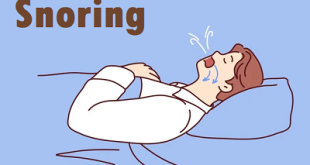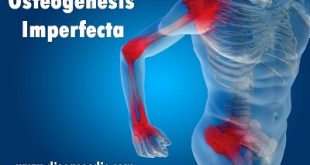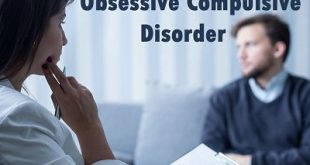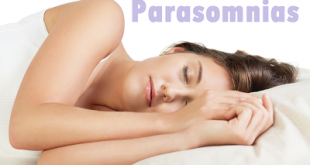Definition
Obstructive Sleep Apnoea (OSA) is a sleep related respiratory condition, leading to repeated temporary cessations of breathing because of a narrowing or closure of the upper airway during sleep. Core symptoms of OSA include excessive daytime sleepiness, snoring, and witnessed apnoea or hypopnoea (blockages or partial blockages of the airway leading to breathing cessations). OSA can affect anyone, but is more common in some people, e.g. those who are male, middle aged, elderly, and over-weight.
Obstructive sleep apnoea
Epidemiology of obstructive sleep apnoea
SDB is common in the United States. The National Commission on Sleep Disorders Research estimated that minimal SDB (RDI >5) affects 7-18 million people in the United States and that relatively severe cases (RDI >15) affect 1.8-4 million people. The prevalence increases with age. SDB remains undiagnosed in approximately 92% of affected women and 80% of affected men.
OSA is increasingly prevalent, in both adults and children, in modern society. The estimated prevalence has been 2% for women and 4% for men. Similar data have been found in an epidemiologic study from Pennsylvania. More recent research indicates a prevalence of 4% for women and 9% for men. Data from the Wisconsin Cohort Study indicate that the prevalence of OSA in people aged 30-60 years is 9-24% for men and 4-9% for women.
The prevalence in children is less certain, but the author’s sleep centre is seeing increasing numbers of adolescent patients, who are often obese and present similarly too many of their adult counterparts, with the important exception that they may be sleepy and/or hyperactive. A 2007 study has suggested that approximately 6% of adolescents have weekly SDB.
International statistics
The prevalence of OSA in non-American populations has only been studied in men and has been found to be as low as 0.3% (England) and as high as 20-25% (Israel and Australia). The prevalence of OSA in Australian men is estimated to be 3%.
Risk factors
Anyone can develop obstructive sleep apnea. However, certain factors put you at increased risk, including:
Excess weight: Around half the people with obstructive sleep apnea are overweight. Fat deposits around the upper airway may obstruct breathing. However, not everyone with obstructive sleep apnea is overweight and vice versa. Thin people can develop the disorder, too.
Narrowed airway: You may inherit naturally narrow airways. Or, your tonsils or adenoids may become enlarged, which can block your airway.
High blood pressure (hypertension): Obstructive sleep apnea is relatively common in people with hypertension.
Chronic nasal congestion: Obstructive sleep apnea occurs twice as often in those who have consistent nasal congestion at night, regardless of the cause. This may be due to narrowed airways.
Smoking: People who smoke are more likely to have obstructive sleep apnea.
Diabetes: Obstructive sleep apnea may be more common in people with diabetes.
Sex: In general, men are twice as likely as women to have obstructive sleep apnea.
Asthma: Recent research has found an association between asthma and the risk of obstructive sleep apnea.
A family history of sleep apnea. If you have family members with obstructive sleep apnea, you may be at increased risk.
Causes of obstructive sleep apnoea
Various factors can contribute to the blocking or collapse of the airway:
Muscular changes – when people sleep, the muscles that keep the airway open along with the tongue relax, causing the airway to narrow. Under normal conditions, this relaxation does not prevent the flow of air in and out of the lungs.
Physical obstructions – when there is additional thickened tissue or excessive fat stores surrounding the airway. This blockage restricts the airflow, and any air that squeezes past can cause the loud snoring typically associated with OSA.
Brain function – in central sleep apnea (CSA) – the less common form of sleep apnea – the neurological controls for breathing are abnormal, causing the control and rhythm of breathing to malfunction. In most cases, CSA is associated with an underlying medical condition such as stroke or heart failure, recent ascent to high altitude or the use of pain relief medication.
When the airway becomes completely blocked, the snoring stops and there is no breathing (apnea) for a 10-20 second time period or until the brain senses the apnea and signals the muscles to tighten, returning the airflow.
Although this process continues hundreds of times throughout the night, the individual experiencing the apnea is not conscious of the problem.
Symptoms
Signs and symptoms of obstructive sleep apnea include:
- Excessive daytime sleepiness
- Loud snoring
- Observed episodes of breathing cessation during sleep
- Abrupt awakenings accompanied by gasping or choking
- Awakening with a dry mouth or sore throat
- Morning headache
- Difficulty concentrating during the day
- Experiencing mood changes, such as depression or irritability
- High blood pressure
- Night time sweating
- Decreased libido
Complications of obstructive sleep apnoea
Sleep apnea can lead to a number of complications, ranging from daytime sleepiness to possible increased risk of death. Sleep apnea has a strong association with several diseases, particularly those related to the heart and circulation.
Diagnosis and test
Your doctor will give you a check up and ask about your sleep. He may also want to ask people who live with you about your shut-eye habits.
You may need to spend a night in a sleep lab or have a sleep study done at your house. You’ll wear monitors to measure things such as:
- Air flow
- Blood oxygen levels
- Breathing patterns
- Electrical activity of the brain
- Eye movements
- Heart rate
- Muscle activity
Treatment and medications
There are several possible treatments for obstructive sleep apnoea. They range from a change in behaviour to facial surgery. The aim of treatment is to restore normal breathing during sleep and to alleviate the troublesome symptoms, such as snoring and daytime fatigue. Treatment may also help lower blood pressure and decrease the risk of stroke, diabetes and heart disease.
Conservative treatments
- In mild cases of sleep apnoea, conservative therapy may be all that is needed. These treatments include the following:
- Overweight individuals can benefit from losing weight. Even a 10% weight loss can reduce the number of sleep apnoea events for most patients.
- Individuals with sleep apnoea should avoid the use of alcohol and sleeping pills, which make the airway more likely to collapse during sleep and prolong the apnoeic periods.
- In some patients who have mild sleep apnoea, breathing pauses occur only when they sleep on their backs. In such cases, using pillows and other devices that help them sleep in a side position may be helpful.
- People with sinus problems or nasal congestion (who are more likely to experience sleep apnoea) can try nasal sprays or breathing strips to reduce snoring and improve airflow for more comfortable night-time breathing.
- Avoiding sleep deprivation is important for all patients with sleep disorders.
Mechanical therapy
- Continuous positive airway pressure (CPAP) is the preferred initial treatment for most people with obstructive sleep apnoea. With CPAP, patients wear a mask over their nose and/or mouth.
- An air blower forces air through the nose and/or mouth. The air pressure is adjusted so that it is just enough to prevent the upper airway tissues from collapsing during sleep.
- The pressure is constant and continuous. CPAP prevents airway closure while it is being used, but apnoea episodes return when CPAP is stopped or it is used improperly.
- Other styles and types of positive airway pressure devices are available for people who have difficulty tolerating CPAP.
Mandibular advancement devices
For patients with mild sleep apnoea, dental appliances or oral mandibular advancement devices that prevent the tongue from blocking the throat and/or advance the lower jaw forwards can be made. These devices help keep the airway open during sleep. A sleep specialist and dentist should be able to determine if this treatment is best for you.
Surgery
Surgical procedures may help people with sleep apnoea. There are many types of surgical procedures, some of which are performed as a day-case. Surgery is reserved for people who have excessive or malformed tissue that is obstructing airflow through the nose or throat. For example, a person with a deviated nasal septum, markedly enlarged tonsils, or small lower jaw with an overbite that causes the throat to be abnormally narrow might benefit from surgery. These procedures are typically performed after sleep apnoea has failed to respond to conservative measures and a trial of CPAP.
Types of surgery include:
Somnoplasty: A minimally invasive procedure that uses radiofrequency energy to reduce the soft tissue in the upper airway.
Uvulopalatopharyngoplasty (UPPP): A procedure that removes soft tissue on the back of the throat and palate, increasing the width of the airway at the throat opening.
Mandibular/maxillary advancement surgery: A surgical correction of certain facial abnormalities or throat obstructions that contribute to sleep apnoea – an invasive procedure that is reserved for patients with severe sleep apnoea with head-face abnormalities.
Nasal surgery: Correction of nasal obstructions, such as a deviated septum.
Tracheostomy: Inserting a tube through the neck directly into the windpipe.
Prevention of obstructive sleep apnoea
You can help prevent obstructive sleep apnoea if you:
- Don’t use alcohol and medicines, such as sleeping pills and sedatives, before bed. These can relax your throat muscles and slow your breathing.
- Eat sensibly, exercise, and stay at a healthy weight.
- Quit smoking. The nicotine in tobacco relaxes the muscles that keep the airways open. If you don’t smoke, those muscles are less likely to collapse at night and narrow the airways.
 Diseases Treatments Dictionary This is complete solution to read all diseases treatments Which covers Prevention, Causes, Symptoms, Medical Terms, Drugs, Prescription, Natural Remedies with cures and Treatments. Most of the common diseases were listed in names, split with categories.
Diseases Treatments Dictionary This is complete solution to read all diseases treatments Which covers Prevention, Causes, Symptoms, Medical Terms, Drugs, Prescription, Natural Remedies with cures and Treatments. Most of the common diseases were listed in names, split with categories.








Exactly my present condition. What are the recommended drugs. Which Hospital with experts to handle this kind of case? Thanking you in advance for your reply, and further directives?
Just go for a general physician and ask them for help regarding your problem. They will guide you to solve.
I snore a lot and am neither fat nor industrious,, please what advice,help or medication can you give me. thanks
please consult a doctor to get rid of this problem.
Please my two year old son suffer alot from snoring, what ? drugs or possible solution for it.. Please help me for the treatment. Thanks
I can’t sleep properly at night I feel like sleepy but I can’t sleep properly..
Please consult a doctor as soon as possible. Take milk before your bed.
I do snore so loud that even a person from 15 meters can hear have tried to change pillow But nothing wat should i do.
To prevent or quiet snoring, try these tips:
If you’re overweight, lose weight.
Sleep on your side.
Raise the head of your bed.
Nasal strips or an external nasal dilator.
Treat nasal congestion or obstruction.
Limit or avoid alcohol and sedatives.
Quit smoking.
Get enough sleep.